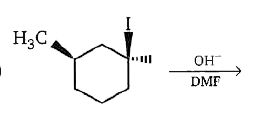In a reaction between NaCl and AgNO3 which results in formation of AgCl & NaNO3 , find the weight of reactants & products.
To find the weight of the reactants and products in the reaction between NaCl and AgNO3, we need to calculate the molecular weights of each compound involved.
1. Identify the Reactants and Products:
- Reactants: Sodium Chloride (NaCl) and Silver Nitrate (AgNO3)
- Products: Silver Chloride (AgCl) and Sodium Nitrate (NaNO3)
2. Calculate the Molecular Weight of NaCl:
- Sodium (Na) has an atomic mass of approximately 23 g/mol.
- Chlorine (Cl) has an atomic mass of approximately 35.5 g/mol.
- Molecular weight of NaCl = Atomic mass of Na + Atomic mass of Cl
- Molecular weight of NaCl = 23 + 35.5 = 58.5 g/mol
3. Calculate the Molecular Weight of AgNO3:
- Silver (Ag) has an atomic mass of approximately 108 g/mol.
- Nitrogen (N) has an atomic mass of approximately 14 g/mol.
- Oxygen (O) has an atomic mass of approximately 16 g/mol (and there are 3 oxygen atoms in AgNO3).
- Molecular weight of AgNO3 = Atomic mass of Ag + Atomic mass of N + (3 × Atomic mass of O)
- Molecular weight of AgNO3 = 108 + 14 + (3 × 16) = 108 + 14 + 48 = 170 g/mol
4. Calculate the Molecular Weight of AgCl:
- Silver (Ag) = 108 g/mol
- Chlorine (Cl) = 35.5 g/mol
- Molecular weight of AgCl = Atomic mass of Ag + Atomic mass of Cl
- Molecular weight of AgCl = 108 + 35.5 = 143.5 g/mol
5. Calculate the Molecular Weight of NaNO3:
- Sodium (Na) = 23 g/mol
- Nitrogen (N) = 14 g/mol
- Oxygen (O) = 16 g/mol (and there are 3 oxygen atoms in NaNO3).
- Molecular weight of NaNO3 = Atomic mass of Na + Atomic mass of N + (3 × Atomic mass of O)
- Molecular weight of NaNO3 = 23 + 14 + (3 × 16) = 23 + 14 + 48 = 85 g/mol
6. Total Weight of Reactants:
- Total weight of reactants = Weight of NaCl + Weight of AgNO3
- Total weight of reactants = 58.5 + 170 = 228.5 g/mol
7. Total Weight of Products:
- Total weight of products = Weight of AgCl + Weight of NaNO3
- Total weight of products = 143.5 + 85 = 228.5 g/mol
Conclusion:
- The total weight of the reactants (NaCl and AgNO3) is 228.5 g/mol.
- The total weight of the products (AgCl and NaNO3) is also 228.5 g/mol.
- Reactants: Sodium Chloride (NaCl) and Silver Nitrate (AgNO3)
- Products: Silver Chloride (AgCl) and Sodium Nitrate (NaNO3)
- Sodium (Na) has an atomic mass of approximately 23 g/mol.
- Chlorine (Cl) has an atomic mass of approximately 35.5 g/mol.
- Molecular weight of NaCl = Atomic mass of Na + Atomic mass of Cl
- Molecular weight of NaCl = 23 + 35.5 = 58.5 g/mol
- Silver (Ag) has an atomic mass of approximately 108 g/mol.
- Nitrogen (N) has an atomic mass of approximately 14 g/mol.
- Oxygen (O) has an atomic mass of approximately 16 g/mol (and there are 3 oxygen atoms in AgNO3).
- Molecular weight of AgNO3 = Atomic mass of Ag + Atomic mass of N + (3 × Atomic mass of O)
- Molecular weight of AgNO3 = 108 + 14 + (3 × 16) = 108 + 14 + 48 = 170 g/mol
- Silver (Ag) = 108 g/mol
- Chlorine (Cl) = 35.5 g/mol
- Molecular weight of AgCl = Atomic mass of Ag + Atomic mass of Cl
- Molecular weight of AgCl = 108 + 35.5 = 143.5 g/mol
- Sodium (Na) = 23 g/mol
- Nitrogen (N) = 14 g/mol
- Oxygen (O) = 16 g/mol (and there are 3 oxygen atoms in NaNO3).
- Molecular weight of NaNO3 = Atomic mass of Na + Atomic mass of N + (3 × Atomic mass of O)
- Molecular weight of NaNO3 = 23 + 14 + (3 × 16) = 23 + 14 + 48 = 85 g/mol
- Total weight of reactants = Weight of NaCl + Weight of AgNO3
- Total weight of reactants = 58.5 + 170 = 228.5 g/mol
- Total weight of products = Weight of AgCl + Weight of NaNO3
- Total weight of products = 143.5 + 85 = 228.5 g/mol
- The total weight of the reactants (NaCl and AgNO3) is 228.5 g/mol.
- The total weight of the products (AgCl and NaNO3) is also 228.5 g/mol.
Similar Questions
Knowledge Check
Which reaction results in the formation ofa pair of enantiomers ?
A B
B C
C D
D
Which of the following reactions will result in the formation of a chiral centre in the product ?
ACH3CH=CH2+HBr→BCH2=CH2+HOBr→CCH3CH2CH=CH2+HBrH2O2−−→DCH3CH2CH=CH2+HBR→Which of the following reactions results in the formation of a pair of diastereomers ?
A B
B C
C D
D
(KOOC−CH=CH−COOK) undergoes Kolbe's reaction to form a product which reacts with ammoniacal AgNO3 solution to form a precipitate.
The product is a saturated hydrocarbon that forms salt with AgNO3.
View SolutionWhich of the following reactions will result in the formation of a chiral centre in the product?
View SolutionThe reaction between which of the following reactants produces hydrogen?
View SolutionThe reaction between which of the following reactants produces hydrogen?
View SolutionWhich one is most reactive towards AgNO3
View Solution


